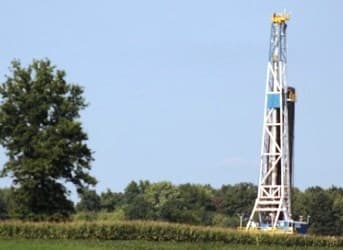President of Russian energy company Rosneft, Igor Sechin, said he was eager to unlock the shale oil potential in the Samara region of western Russia. With forecasts warning the U.S. shale phenomenon won't last, Russia could be moving its pawns into play.
Sechin met Friday with Helge Lund, chief executive officer of Norwegian energy major Statoil, to sign a joint venture agreement for the production of the Domanik shale formation in the Samara region, near Russia's southwest border with Kazakhstan.
Sechin said in a statement the deal with Statoil would help his company, the largest publicly traded oil and gas company in the world, accelerate the development of hard-to-reach oil reserves in the region.
Related article: Oil Majors Pushing Offshore, but Obstacles Remain
"If successful, we believe this could be a world class shale oil asset," Lund added.
Rosneft said in a statement its joint venture company with Statoil would spend three years on a pilot program assessing the potential for commercial production from the Domanik shale formation.
While neither company offered a reserve estimate for the shale formation, the U.S. Energy Information Administration estimated Russia holds the largest deposits of technically recoverable shale oil in the world at around 75 billion barrels of oil.
Rosneft and Statoil agreed to drill at least six exploration wells in the region through 2021. Sechin said the partners would use "state-of-the-art technologies" to tap into the Domanik shale.
New technologies used to drill for oil in shale helped establish the United States as a world leader in oil production. Much of that production growth has come from the Bakken and Three Forks formations in North Dakota, South Dakota and Montana. The U.S. Geological Survey, in a May report, said the formations contain an estimated mean of 7.4 billion barrels of undiscovered, technically recoverable oil. By 2015, the United States may be the world's largest oil producer thanks in part to shale.
In November, John Felmy, chief economist at the American Petroleum Institute, said domestic crude oil production increased in October by 11.7 percent year-on-year to nearly 7.8 million barrels per day. The International Energy Agency, which has headquarters in Paris, said the U.S. crude oil production lead should only last about 10 more years, however.
Related article: No Need for More Iranian Oil, U.S. Says
ADVERTISEMENT
In those 10 years, Rosneft will have advanced well enough into its shale exploration campaign in the Ural region to take full advantage of its oil potential. In June, the Russian company signed an agreement for similar oil reserve development with U.S. supermajor Exxon Mobil in the Yuganskneftegaz region in Western Siberia. While short-term rewards may come from the momentum established in the United States, the mid- to long-term forecast for shale may have Russian emerging on the horizon.
By. Daniel J. Graeber of Oilprice.com



















The US is the third largest producer of crude plus condensate (oil, in the industry) in the world, and has been for some time. The IEA statement that the US will be the largest producer is not referring to crude plus condensate but is including natural-gas liquids at the very least, and perhaps natural-gas plant liquids as well. The statement as quoted is misleading, and, as it has been disseminated widely, has led to the common belief that the US will soon be producing more oil than either Russia or Saudi Arabia. It won't be, and the IEA report reflects that but you have to read beyond the bit that was quoted here.